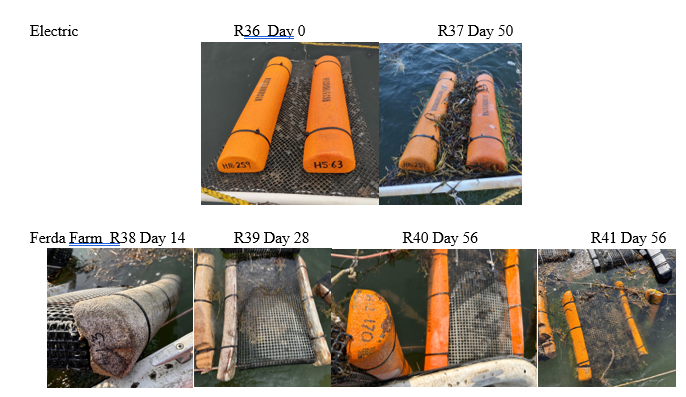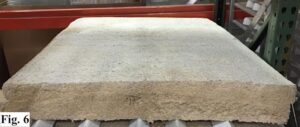In Maine, the lobster industry alone generates $1 billion per year in supply chain revenue, with fishermen accounting for about 4,500 jobs as of 2021. A recent Northeast SARE project experimented with a sustainable alternative to Styrofoam lobster buoys.
In Northeast SARE Research for Novel Approaches Grant LNE23-479R, “Proofing Mycelium-based Buoys in Aquaculture Applications”, aquaculture operations across the Northeast helped identify the benefits and challenges of using mycelium as part of ocean farming.
Building on the successes of previous experiments using MycoRafts for marshland restoration and mycelium buoys for oyster farming, project leader Sue Van Hook of Greenhorns in Maine, researched a number of approaches to creating lobster buoys from mushroom mycelium – the fibrous tissue from which mushroom fruiting bodies emerge.
Along with a team of farming and research collaborators, Hook’s aim was to develop, test, and refine a viable, cost-effective alternative to plastic flotation devices that can be widely adopted for use in aquaculture.
An organic, biodegradable alternative to irretrievable plastic buoys would reduce harmful waste entering the ocean as well as making the most of agricultural byproducts – which are used as the substrate mycelium colonizes. Hook and team tested a number of shapes, sizes, and coatings – including a soy-based paint, traditional buoy paint, and unpainted versions.

The project yielded a variety of insights into how mycelium can be used in aquaculture settings. The larger coated buoys held up best in rough waters, while smaller uncoated buoys could break down in as little as a week. The biodegradability that make MycoRafts so effective at giving marshland plants a supportive place to form their own root rafts worked against the need for buoys that can last months in choppy seas. More research will be needed to create a waterproof sealant and methods of buoy attachment to aquaculture gear.
Hook is now investigating using flat buoys for marshland eelgrass farming and continuing to experiment with MycoRafts in saltwater marshland restoration.
